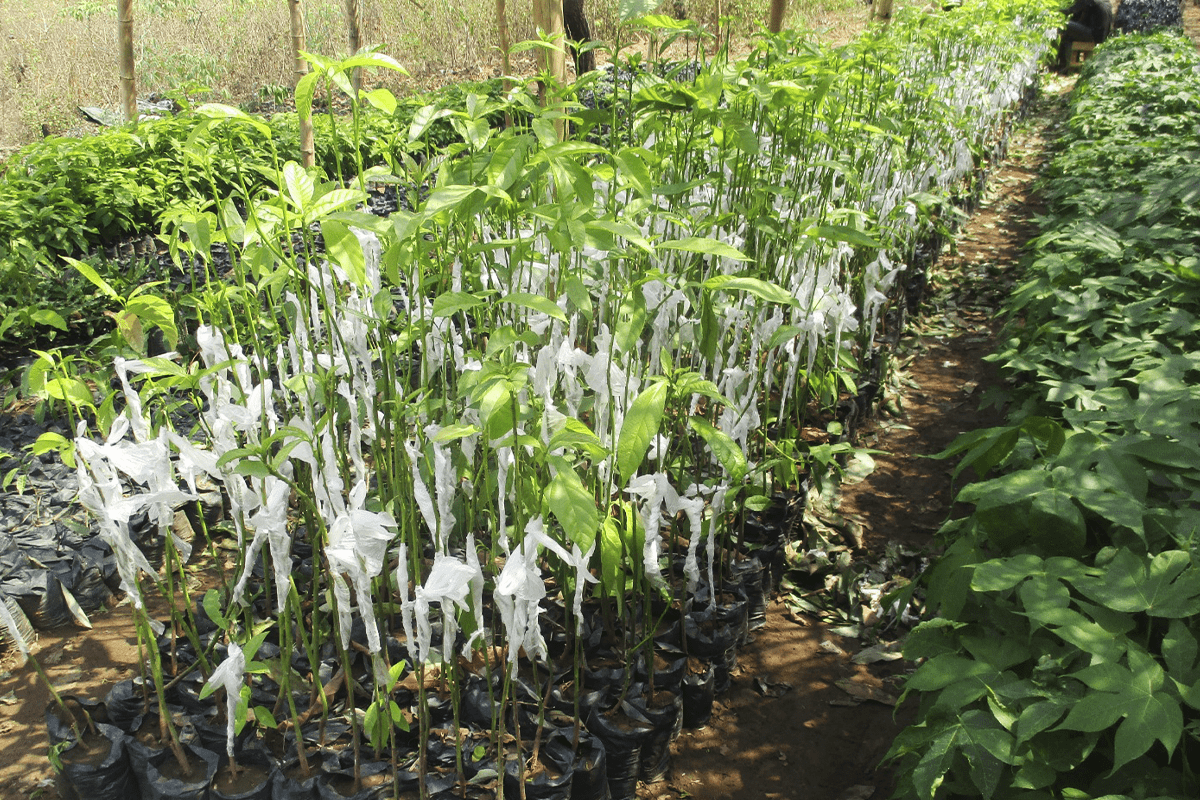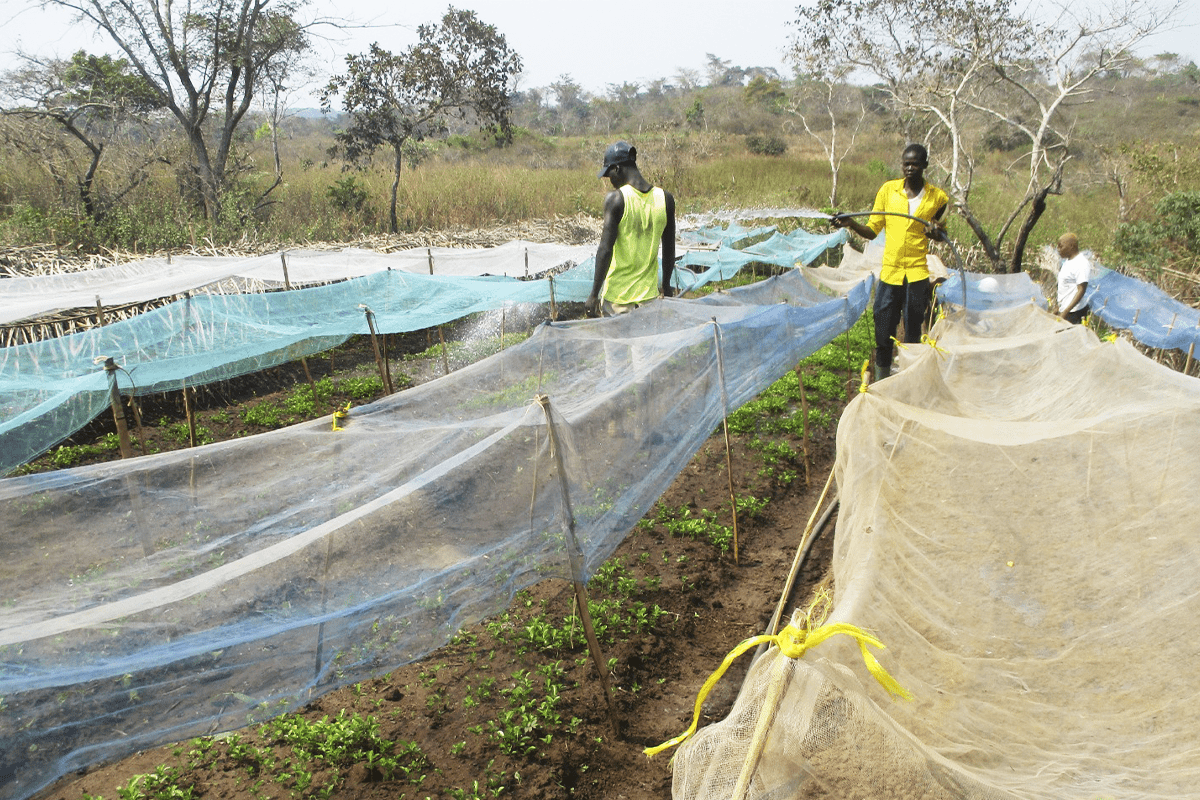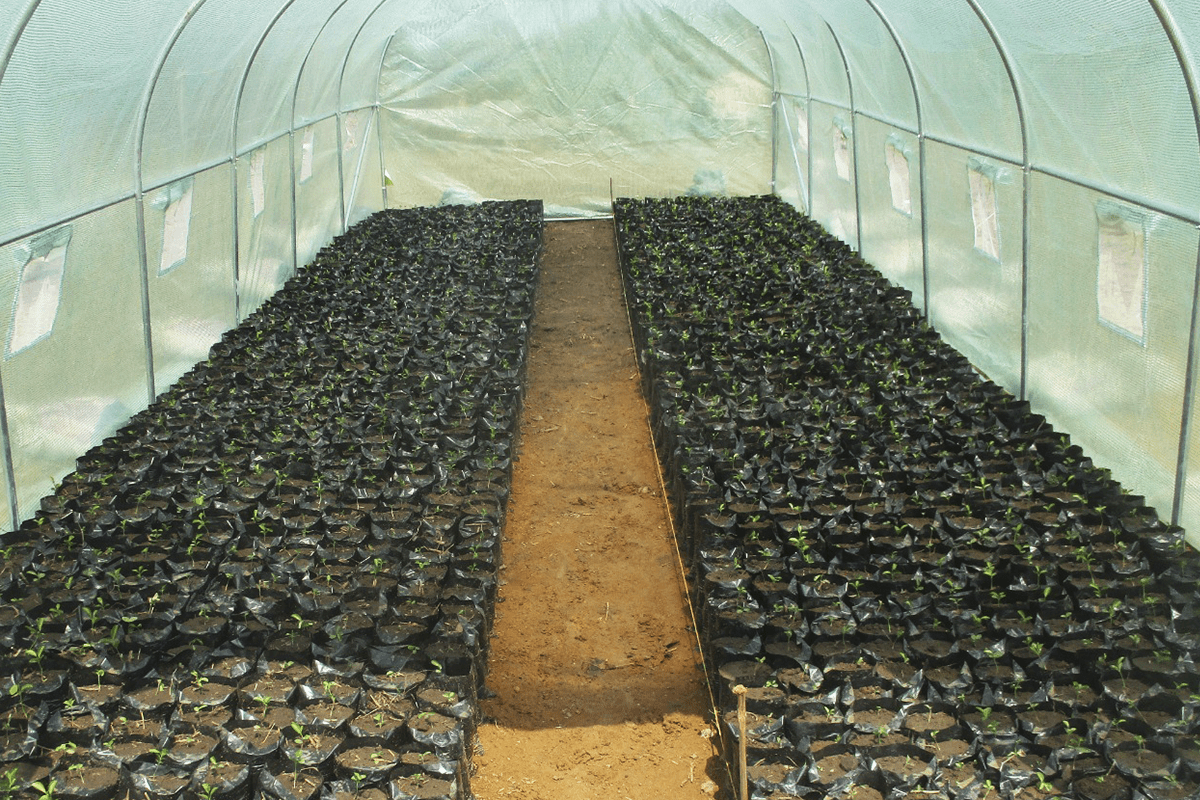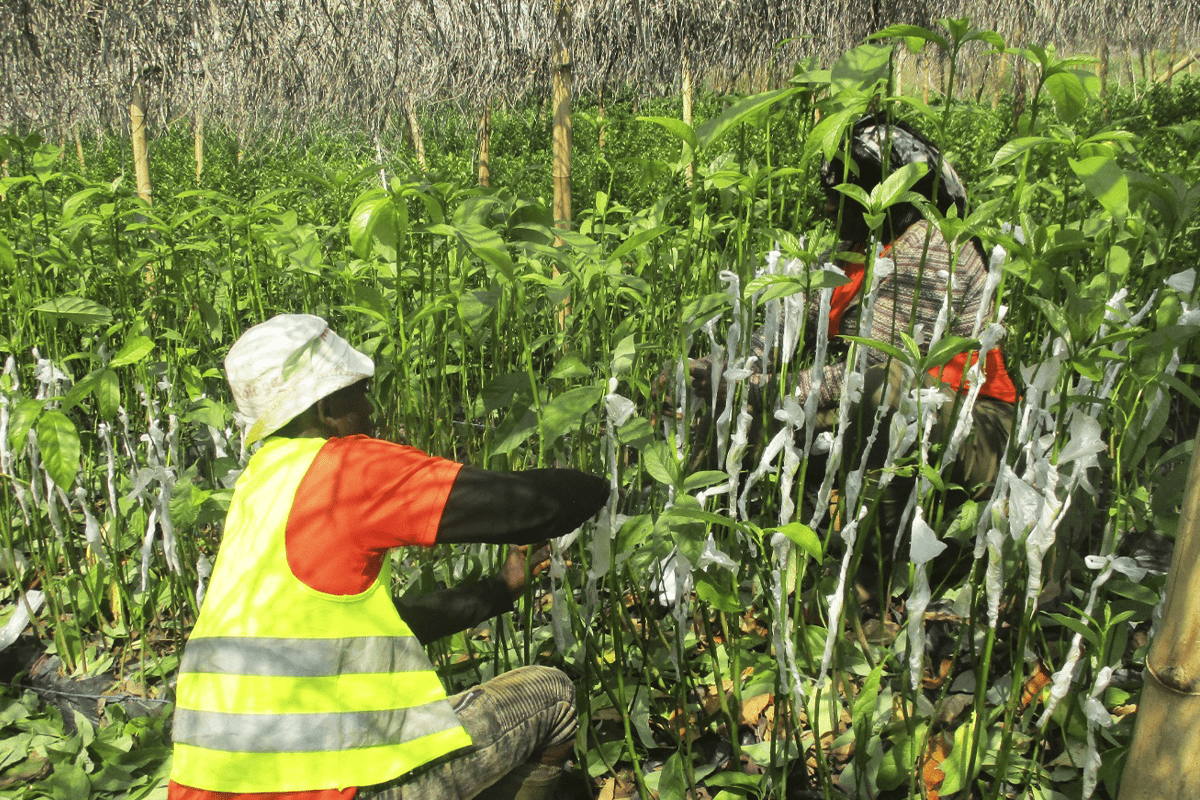At DGB Group, we're always looking for new and innovative ways to promote sustainable agriculture and reforestation. That's why we embarked on an exciting grafting process for our avocado and mango seedlings. In this project update, we'll take you through the fascinating process and explain why grafting is such an important technique for sustainable agriculture.
 Grafted Seedlings in the nursery - Sawa Afforestation Project, Cameroon, DGB.
Grafted Seedlings in the nursery - Sawa Afforestation Project, Cameroon, DGB.
Our project in Cameroon
Cameroon is an African country with a rich culture, good climate, and rich soils. It has a range of very rare and often endemic species, and protecting the ecosystems of Cameroon is a priority in terms of global biodiversity. However, Cameroon has widespread poverty and needs projects, such as DGB’s afforestation project, to improve community development and environmental conservation. DGB’s project focuses on growing and facilitating the planting of millions of trees over the coming years. These trees will include shade and fruit trees on community-owned land and diverse indigenous species. The fruit trees include avocado and mango seedlings, which are grafted for optimal growth and yield.
The ecological benefits of grafting
Let’s start with what grafting means: Grafting is a horticultural technique that involves taking a stem, bud, or scion from one plant and attaching it to the rootstock of another plant. The process allows farmers to combine the best traits of two different plants, creating a stronger, more resilient seedling.
One of the main ecological benefits of grafting is that it can increase the yield and quality of crops while also reducing the need for pesticides and other chemicals. By grafting avocado and mango seedlings, we can create plants that are more resistant to disease and pests, require less water, and produce more fruit. This results in a more sustainable and efficient agricultural system.
Read more: What is sustainable land management?
 Seedbeds in the nursery - Sawa Afforestation Project, Cameroon, DGB.
Seedbeds in the nursery - Sawa Afforestation Project, Cameroon, DGB.
The grafting process
The grafting process begins by selecting the scion, a young stem selected for its desirable traits, such as disease resistance, fruit quality, or growth rate. The scion is then cut from the parent plant and carefully grafted onto the rootstock of another plant.
Once the scion has been attached to the rootstock, the new plant is left to grow until it is strong enough to be transplanted. During this time, the scion and rootstock fuse together, forming a new, stronger plant that incorporates the desirable traits of both plants.
 Seedbeds in the nursery - Sawa Afforestation Project, Cameroon, DGB.
Seedbeds in the nursery - Sawa Afforestation Project, Cameroon, DGB.
The positive impact on local communities
The grafting process not only has ecological benefits but also has a positive impact on local communities. By promoting sustainable agriculture and increasing crop yields, we can support local farmers and provide them with a more reliable source of income. Additionally, by grafting fruit trees, we're helping to provide a source of nutritious food for local communities, which can improve health and reduce food insecurity.
Read more: How regenerative agriculture is transforming sustainable farming
 Local nursery staff putting their new skills to work after workshops with a grafting expert - Sawa Afforestation Project, Cameroon, DGB.
Local nursery staff putting their new skills to work after workshops with a grafting expert - Sawa Afforestation Project, Cameroon, DGB.
The use of leading carbon standards
At DGB, we're committed to using leading carbon standards in all our projects, and our grafting process is no exception. By following best practices and standards, we can ensure that our plants are healthy, strong, and able to sequester carbon from the atmosphere. This allows us to create high-quality carbon credits that can be used to offset carbon emissions and prevent nature loss.
Grafting for resilient and sustainable agriculture
The grafting process for avocado and mango seedlings is a fascinating technique that can significantly impact sustainable agriculture and local communities. By creating stronger, more resilient plants, we can increase crop yields, reduce the need for pesticides, and provide a more reliable source of income for farmers. Additionally, by following leading carbon standards, we can help combat rising emissions and biodiversity loss and create a more sustainable future for all.
Contact us to get involved




